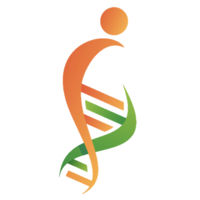预约演示
更新于:2025-05-07
Firmicute infection
壁厚菌门感染
更新于:2025-05-07
基本信息
别名- |
简介- |
关联
1
项与 壁厚菌门感染 相关的药物作用机制 β-glucuronidase抑制剂 |
在研机构 |
原研机构 |
非在研适应症- |
最高研发阶段药物发现 |
首次获批国家/地区- |
首次获批日期1800-01-20 |
100 项与 壁厚菌门感染 相关的临床结果
登录后查看更多信息
100 项与 壁厚菌门感染 相关的转化医学
登录后查看更多信息
0 项与 壁厚菌门感染 相关的专利(医药)
登录后查看更多信息
11
项与 壁厚菌门感染 相关的文献(医药)2024-01-01·IDCases
Gangrenous cholecystitis due to rare actinomyces odontolyticus infection in patient with pancreatic adenocarcinoma: A case report
Article
作者: Blotevogel, Phillip ; Nahal, Chadi ; Fleetwood, Vidyaratna A. ; Fleetwood, Vidyaratna A ; Fleetwood, Vidya A.
2023-09-01·Journal of fish diseases
First identification and histopathological analysis of Lactococcus garvieae infection in whiteleg shrimp, Penaeus vannamei cultured in low salinity water.
Article
作者: Ballantyne, Rolissa ; Lee, Jai-Wei ; Liu, Chun-Hung
2021-12-01·BMC Infectious Diseases3区 · 医学
Case report of an unusual hepatic abscess caused by Actinomyces odontolyticus in a patient with human immunodeficiency virus infection
3区 · 医学
ArticleOA
作者: Chang, Yuan-Chen ; Hsu, Shao-Lun ; Fan, Chia-Kwung ; Wu, Chin-Ting ; Lee, Yuarn-Jang
分析
对领域进行一次全面的分析。
登录
或

生物医药百科问答
全新生物医药AI Agent 覆盖科研全链路,让突破性发现快人一步
立即开始免费试用!
智慧芽新药情报库是智慧芽专为生命科学人士构建的基于AI的创新药情报平台,助您全方位提升您的研发与决策效率。
立即开始数据试用!
智慧芽新药库数据也通过智慧芽数据服务平台,以API或者数据包形式对外开放,助您更加充分利用智慧芽新药情报信息。
生物序列数据库
生物药研发创新
免费使用
化学结构数据库
小分子化药研发创新
免费使用
